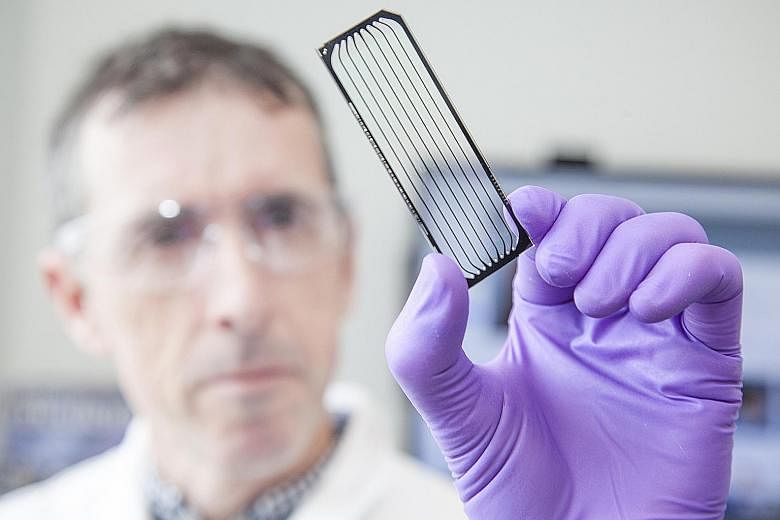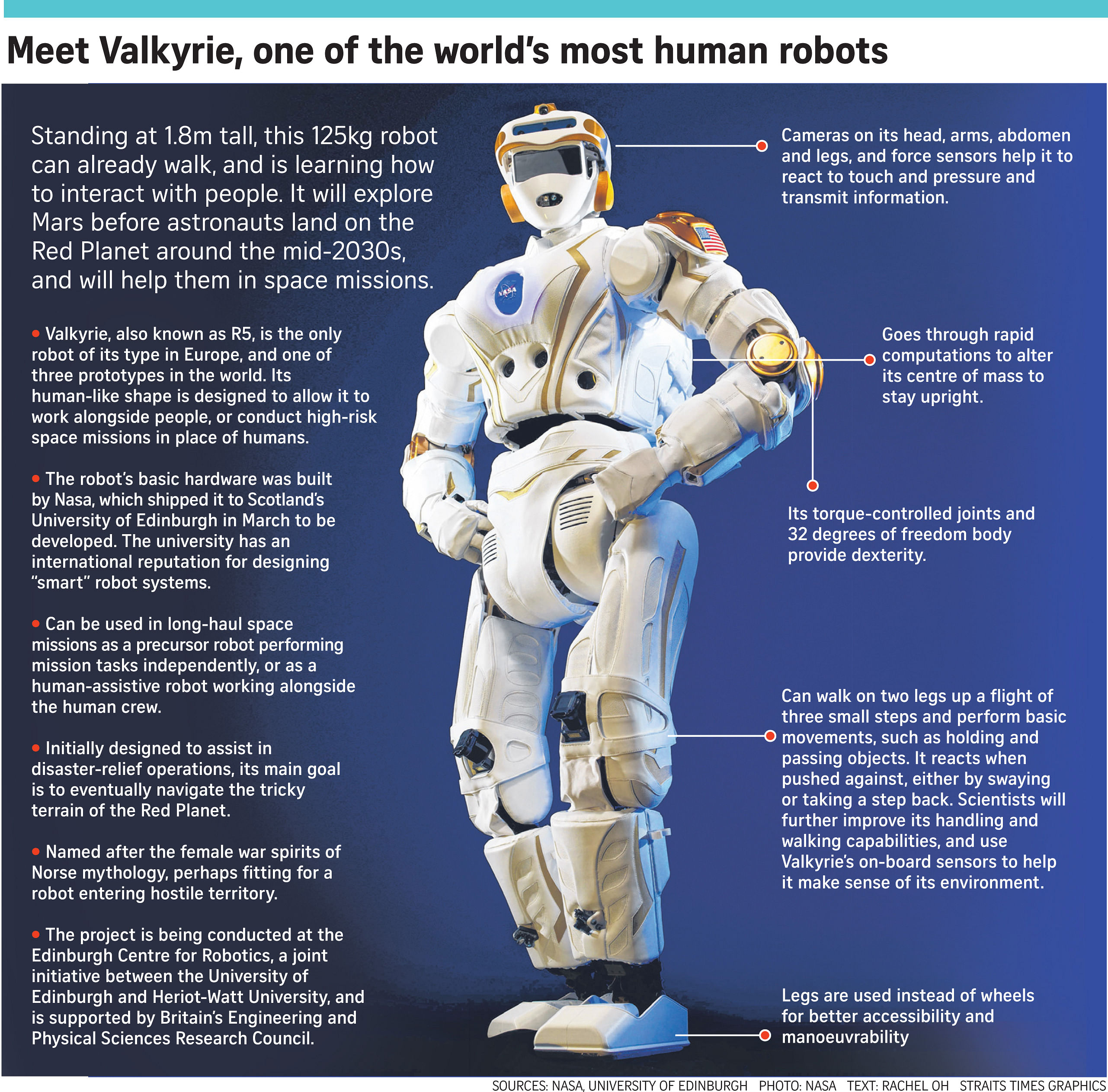What's new on the cancer scene that could be game changers? Experts from Brigham and Women's Hospital, Massachusetts General Hospital and the Dana-Farber Cancer Institute picked the 12 things they believe will have the biggest impact on patient care a decade or more from now. Senior Health Correspondent Salma Khalik, who was at the World Medical Innovation Forum on Cancer in Boston last month - attended by more than 1,000 cancer experts from 23 countries - outlines the "disruptive dozen".
CELLULAR IMMUNOTHERAPY
Normally, proteins in the body called chimeric antigen receptors (CAR) trigger T-cells, which are part of the immune system, to recognise and kill cancer cells. But cancer cells are smart and have learnt to fool the CAR, so the body does not mount a fight against the invading cancer cells.
In cellular immunotherapy, some T-cells are removed from the body and genetically altered so they will again recognise cancer cells as the enemy. These cells are then reintroduced into the body. They not only hunt cancer cells, but they also "teach" other CAR T-cells to recognise cancer cells.
This therapy has been proven to work well with leukaemia or blood cancer. As a result, pharmaceutical companies are investing heavily in finding ways to get the same effect with other cancers. One fear, though, is that artificially activating the immune system could make it go into superdrive, leading to some fairly serious side effects.
IMMUNE MODULATORS (CHECKPOINT INHIBITORS) AND VACCINES
These also use the immune system to fight cancer tumours. The T-cell has a protein on its surface called PD-1 that probes for "invaders". Cancer cells have their own protein - the PD-L1 and PD-L2 - that fool PD-1 into leaving them alone.
Checkpoint is the encounter between the PD-1 and the PD-L1/2 proteins. There are now checkpoint inhibitor drugs to block the "I'm part of you" message sent by cancer cells.
Two such drugs against skin cancers are approved for use. Several others are in late stages of development or undergoing clinical trials.
The team behind this said it is this unique approach of boosting the body's own defences that has produced stunning results, particularly when combined with conventional cancer treatment.
Drug companies are also developing vaccines in hopes of growing the population of cancer-fighting cells to help those with advanced cancer.
LIQUID BIOPSY FOR CANCER
Today, biopsies are done by extracting a small amount of the cancer tumour, which can be painful. There is now fairly advanced research on diagnosing cancer with a blood test, as scientists have found that cancer patients have cancer cells floating in their blood. They are now working on the accuracy of such tests.
Dubbed the "holy grail" for cancer care, liquid biopsy could significantly shorten diagnosis time, find very early-stage cancer in those with no symptoms and provide follow-up checks on the success of treatments.
MACHINE LEARNING AND COMPUTATIONAL BIOLOGY
With the development of supercomputers, experts say that within a decade, doctors will be able to check a patient's cancer type, location, size and grade, as well as all the relevant proteins, metabolites (produced during the body's chemical processes) and lipids (such as fats), and take into account the person's age and gender using a large database, to come up with the best treatment options.
EPIGENETICS
Doctors used to think cancer was caused only by damage to the DNA sequence of critical genes so they become abnormal. But they have now found it can also be caused by problems with the epigenome - the "manual" that helps cells replicate. When the "instructions" go wrong, abnormal cell growth can occur.
Researchers have found that epigenetic changes that lead to some cancers (such as brain cancer) can be reversed with novel treatments. In some cases, these drugs are less toxic than conventional chemotherapy.
THE MICROBIOME
This is research on harnessing the body's population of more than 100 trillion fungi, bacteria, protozoa and viruses to fight certain cancers.
Adding a particular strain of bacteria to the digestive tracts of mice with skin cancer, for example, was able to boost their immune system.
CRISPR, GENOME EDITING
A new technology - Clustered Regularly Interspaced Short Palindromic Repeats (CRISPR) - can rapidly read, study, compare and edit DNA sequences by snipping off unwanted parts. The technique is already used on plant DNA to make them resistant to bacteria or fungi. It is also being tested on laboratory animals, by altering genes in pig embryos so they could potentially grow human organs for transplant, for example.
Scientists hope CRISPR could be used to treat a host of diseases like muscular dystrophy, Alzheimer's, arthritis, heart disease and cancer.
SINGLE-CELL MOLECULAR PROFILING
By extracting a single cancer cell and studying it without surrounding clutter, more can be learnt, including why there are different cancer types within the same tumour. Tools can then be developed for early cancer detection and targeted therapy. It can also help in understanding the mutation rates of some cancers.
MOBILE HEALTH (MHEALTH)
With the support of mobile devices, doctors could track patients' conditions and know if they are adhering to treatment schedules. Monitoring devices can let doctors know how patients are, without having to ask. There are already apps that remind patients to take their medicine.
In one clinical trial, patients report their side effects via an app. This not only lets the company gather information on the drugs' side effects, but it also enables faster treatment.
PATIENT-SPECIFIC RESEARCH
The greatest challenge for doctors is to match patients with the right treatment at the right dose and at the right time, and with minimum side effects and maximum efficacy.
The National Cancer Institute in the United States is studying the genotype (genetic make-up) and phenotype (observable traits) of cancer molecules to see if they can predict the response of various cancer types to different therapies.
REDEFINING VALUE
Cancer is very expensive to treat. Insurance firms sometimes baulk at the high price of certain treatments. With new treatment options, the cost is likely to continue rising. This is an issue that needs to be resolved, if patients are to get good care.
One suggestion is to drop treatments of limited value. Others include better selection of patients who will benefit from the expensive treatments, and greater focus on prevention and early treatment.
NANOTECHNOLOGY
One of the biggest challenges in fighting cancer is to destroy cancerous cells without damaging the adjacent healthy ones.
In nanotechnology, the drug is delivered directly to cancer cells.
A nanoparticle is extremely small - 1,000 placed in a line is equal only to the width of a strand of hair.
Scientists are now trying to induce cancer cells to absorb these particles carrying cancer-killing drugs. This could lead to the destruction of only the cancer cells and nothing else.



